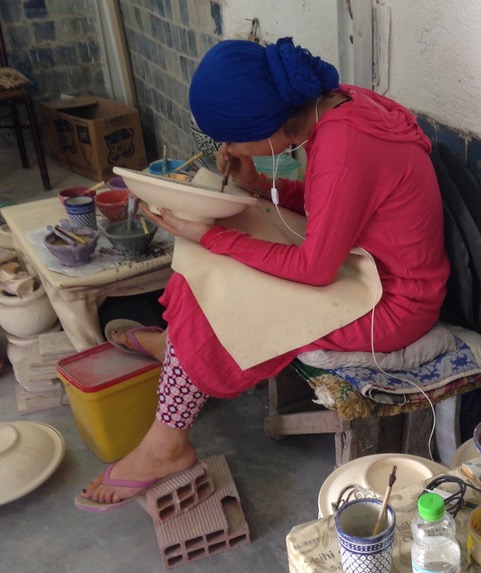Could Spinefulness help put weight in your bones?

Are you familiar with Gretchen Rubin, author of wildly successful self-help book, The Happiness Project?
One of her “secrets of adulthood” goes like this: what you do every day is more important than what you do once in a while.
It makes sense. Anyone who plays a musical instrument has learned that 15 minutes of practice every day is more effective than an hour of practice just before your lesson.
If I might extend this logic, something that you do all day, every day, is surely more important that something you for half an hour a day, or three times a week. If you are doing weight-bearing exercise to strengthen your bones, then putting more weight into your bones all day, every day, can only work to your advantage.
Putting weight into your bones is exactly what Spineful alignment teaches. We learn to stack our spine in a single column, then sit on bone, stand on bone, and, most important for bone health, walk on bone.
But doesn’t everyone sit and walk on bone?
Yes and no.

Of course, your bones bear some weight, no matter how you hold your body. But unless you’re aligned with gravity, your bones bear less than your full body weight. Instead, muscles and tendons hold the weight that isn’t transferring through our bones.
In our most common way of sitting, we curl our spine into a C-shape and rest on the buttocks. The rounding doesn’t have to be exaggerated to take weight out of your spine. Check the picture of the young artisan at work in modern posture, and compare it to photo above, of the older artisan, who still sits on his bones. Whose spine looks stronger?
Our common way of standing also takes weight out of our bones. With the pelvis forward of the thighs, like the man below, the force of gravity moves in a broken line. In order to stand without falling over, he has to round his upper back, poke his head forward, and then hold on with his muscles.

Here’s a quick test to tell if your weight is in your bones:
- Stand with your feet six inches apart at the heels, eight inches at the toes.
- Freeze your body, then drop your chin and see if you can see the fronts of your ankles.
- Most likely you can’t. Your upper thighs will be in the way. So, move your upper thighs back until you can see your ankles.
- Soften the backs of your knees and bring your weight into your heels.
- Now check it out: put your hands on your thighs and try to jiggle them.
- If your muscles are soft and jiggly, your weight is in your leg bones.
- If they’re tight, and don’t move, then you are using your muscles, instead of your bones, to hold yourself upright.
The more muscle you use, the less weight your bones bear.
We have, as my teacher Jean Couch says, “decommissioned the bones.”
How important is it to put your bones back to work?
The best way to answer that question is through a quick look at bone physiology.
Our bones are not permanent structures. Through a process called bone-remodeling, our bodies replace 10 per cent of our bone mass every year. (A newborn’s body replaces almost the entire skeleton in the first year of birth.)
Bone-remodeling follows rules, summed up in Wolff’s law: “bone in a healthy person or animal will adapt to the loads under which it is placed.” More load means that the bones will become stronger. The racket arm bones of tennis players, for example, can be 20% wider and contain 40% more bone mineral than their other arm.
The opposite is also true. Bones that bear less weight will become less dense and weaker.
As far as I know, no clinical study has ever been undertaken to prove that posture aligned with gravity, Spineful alignment, in other words, leads to stronger bones. But both logic, and at a stretch, Gretchen Rubin, tell us that increasing the amount of weight we bear in our bones can make them stronger.